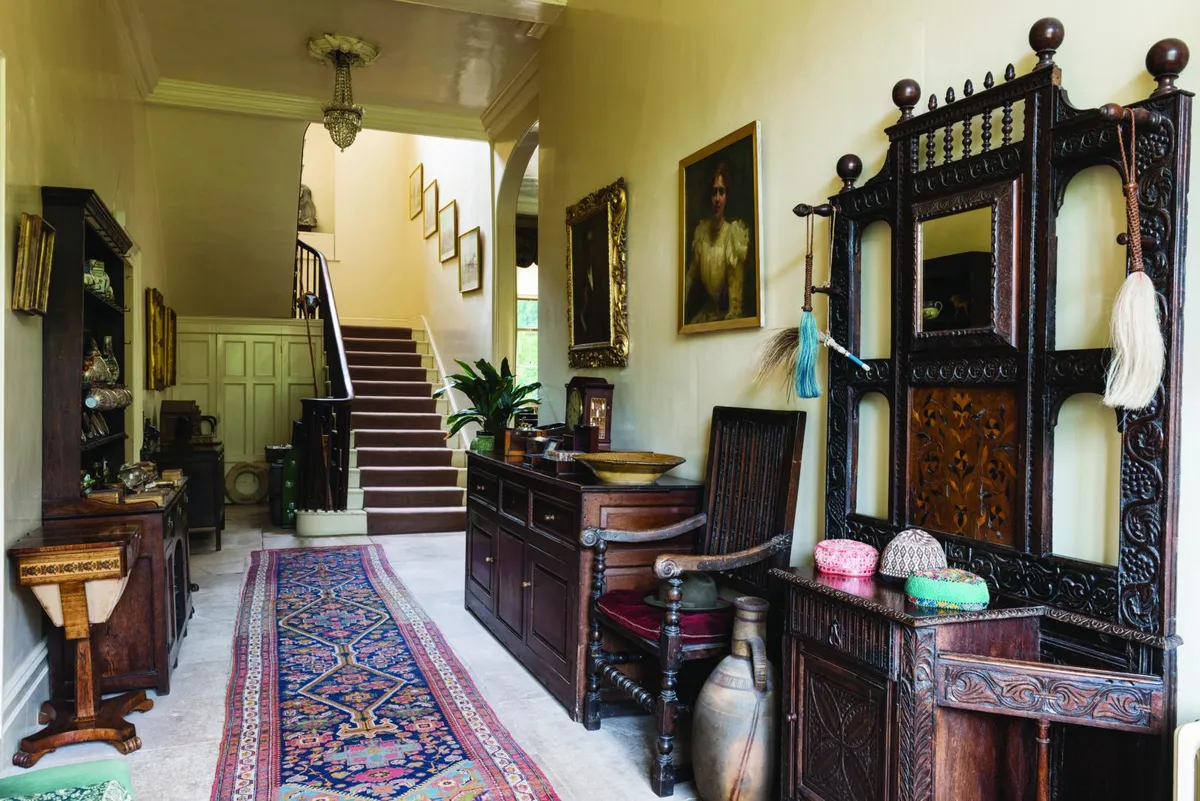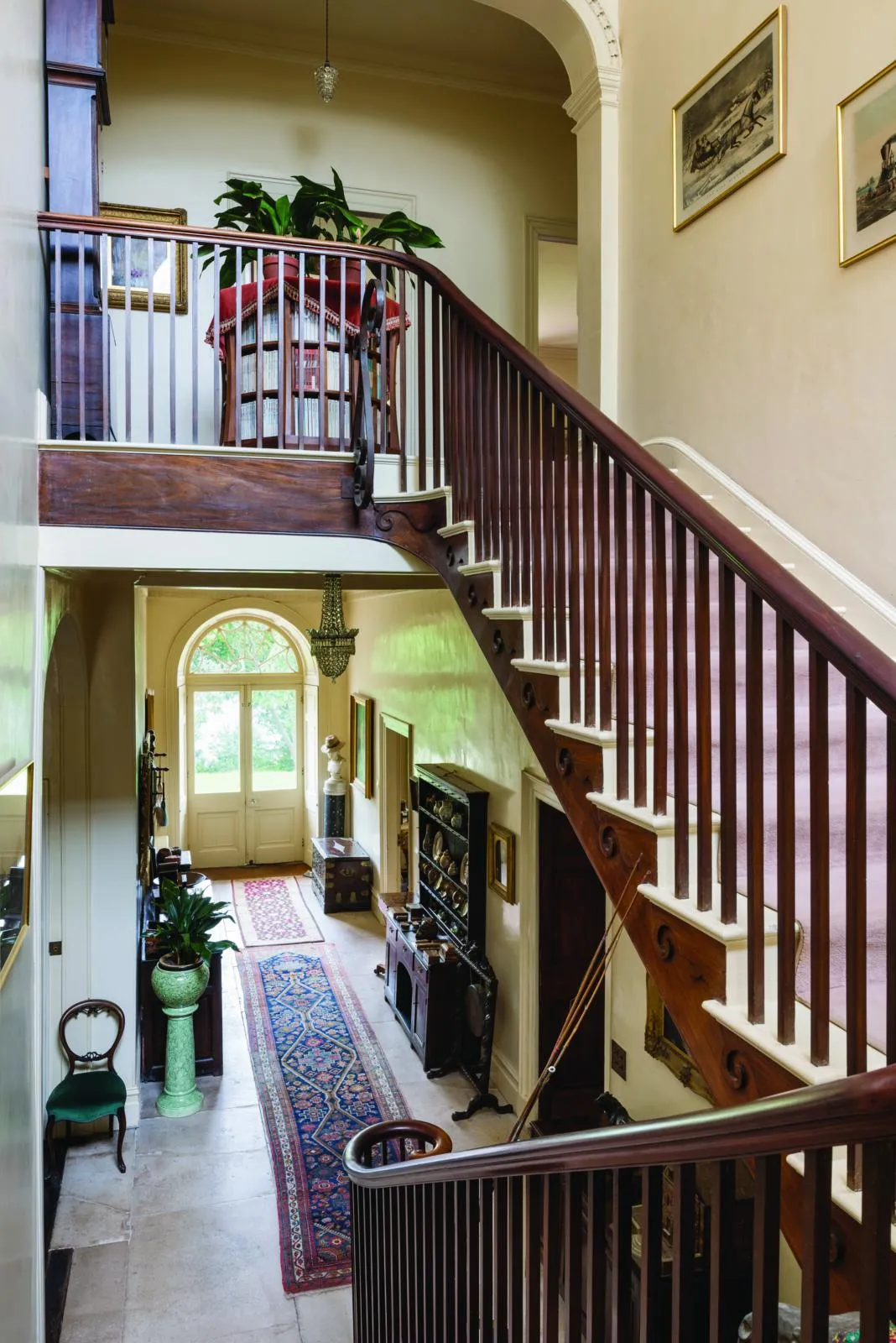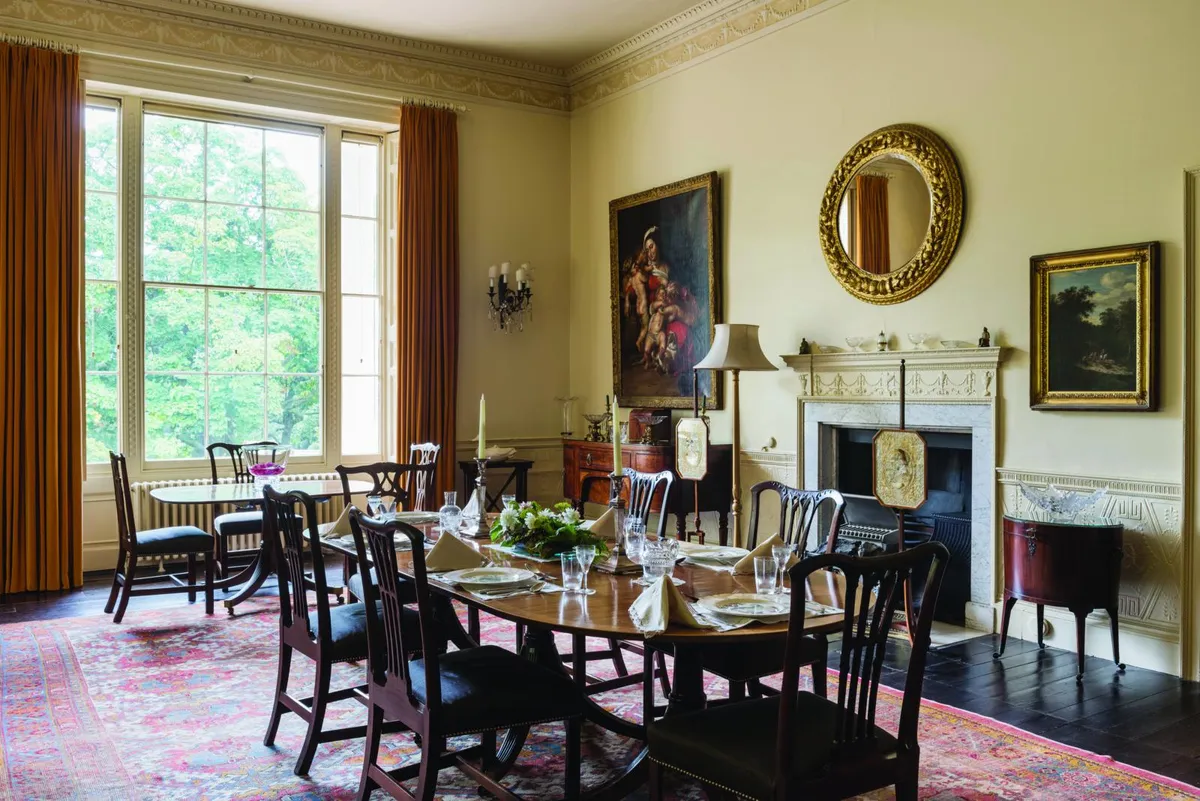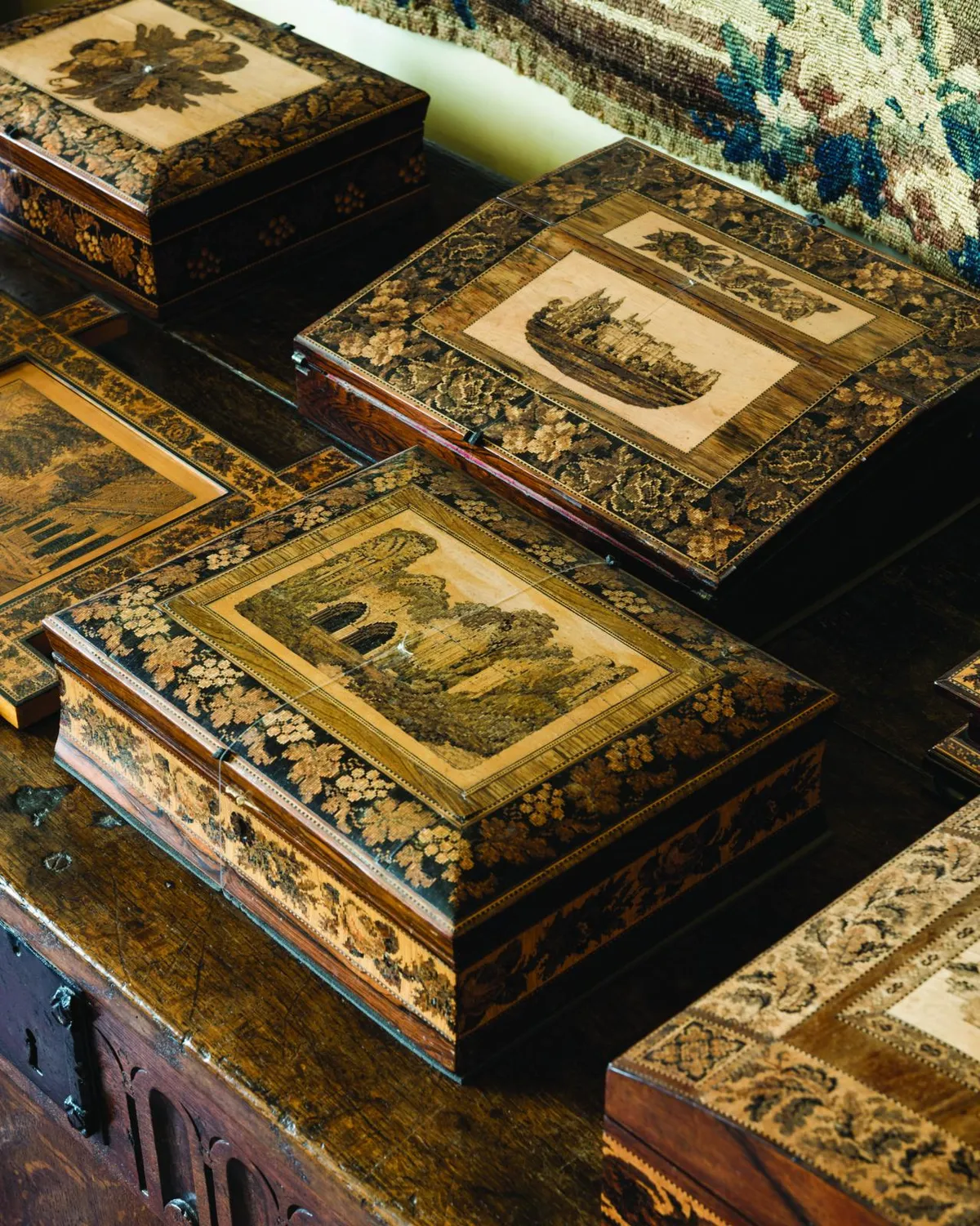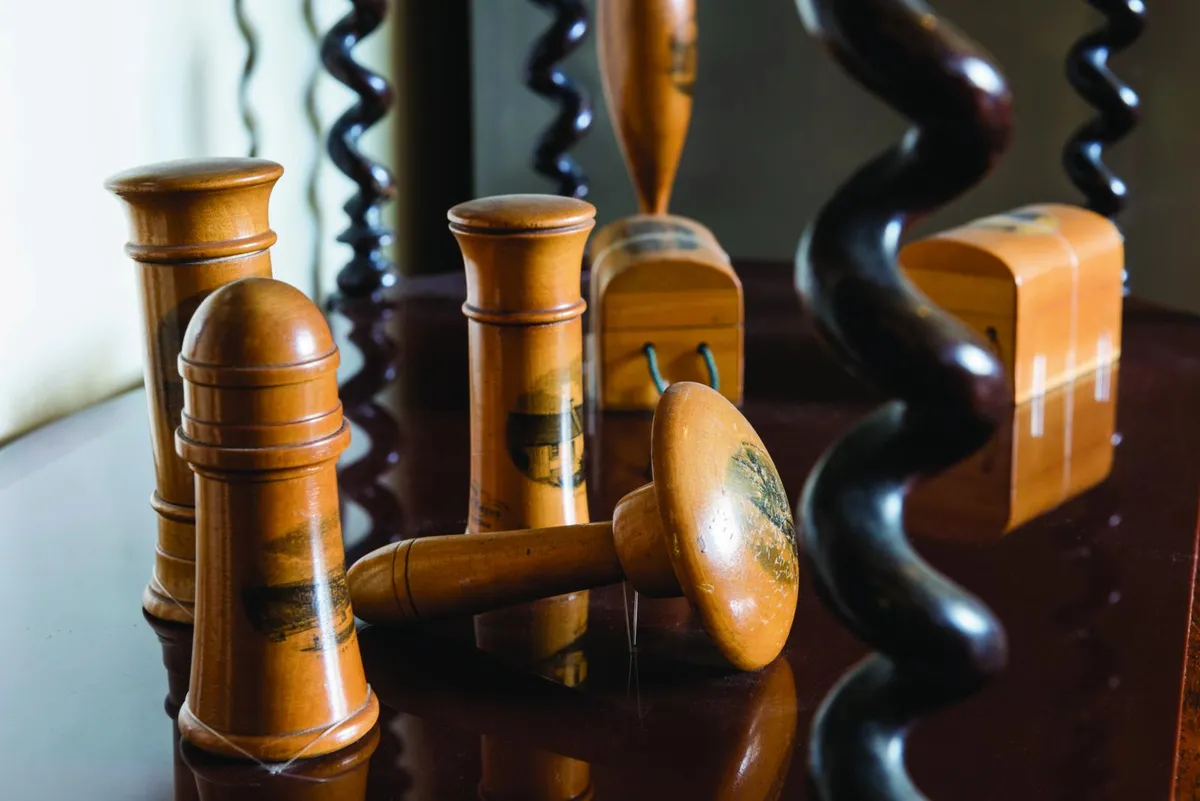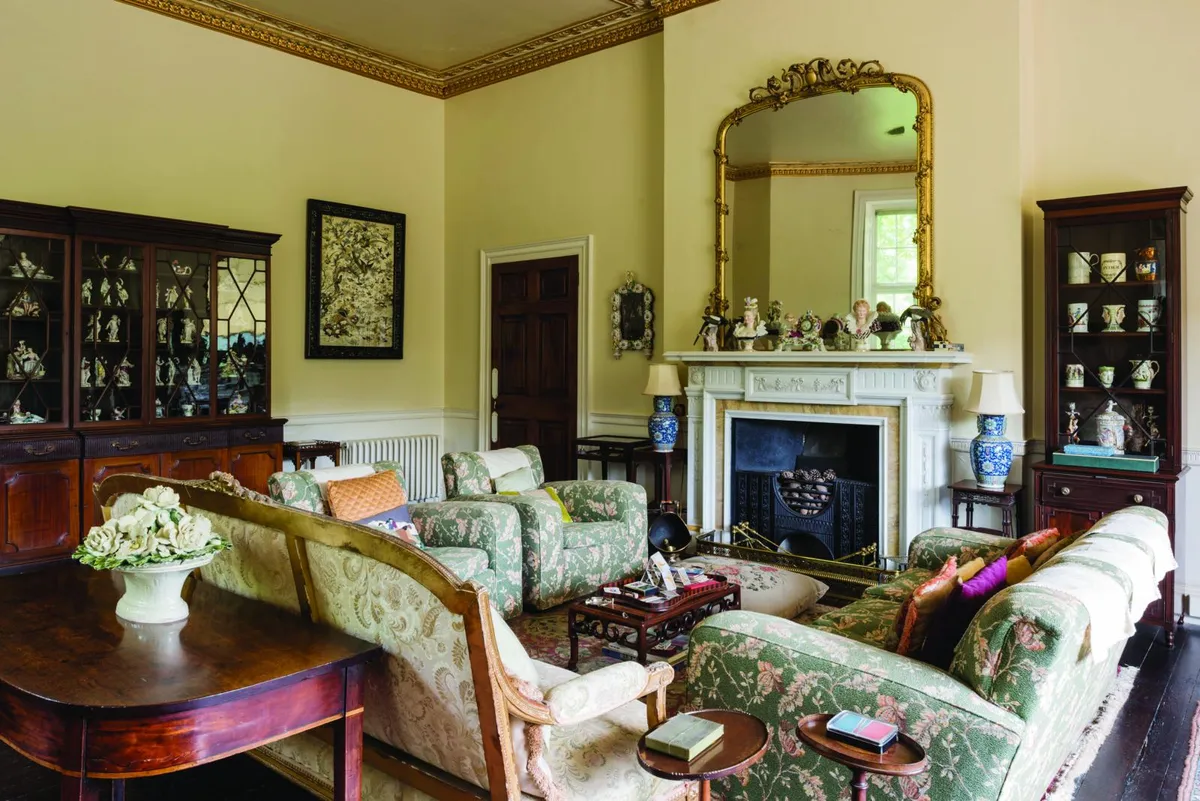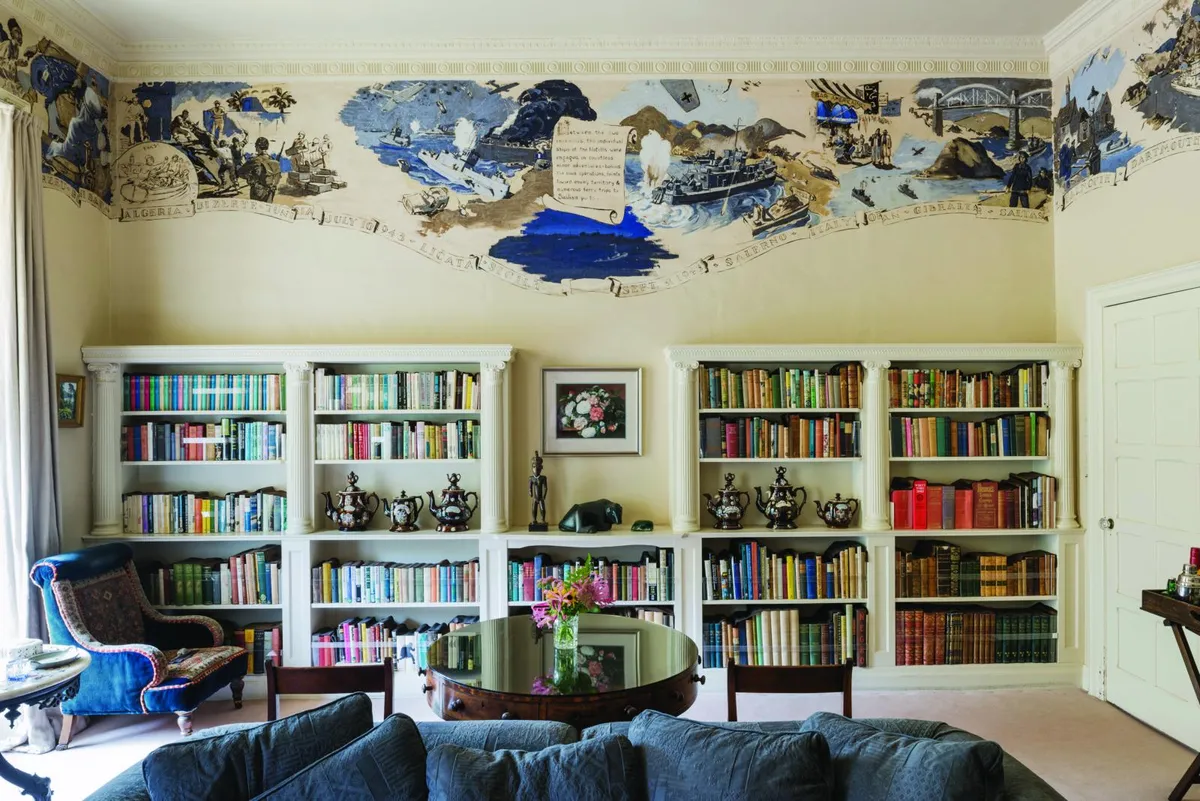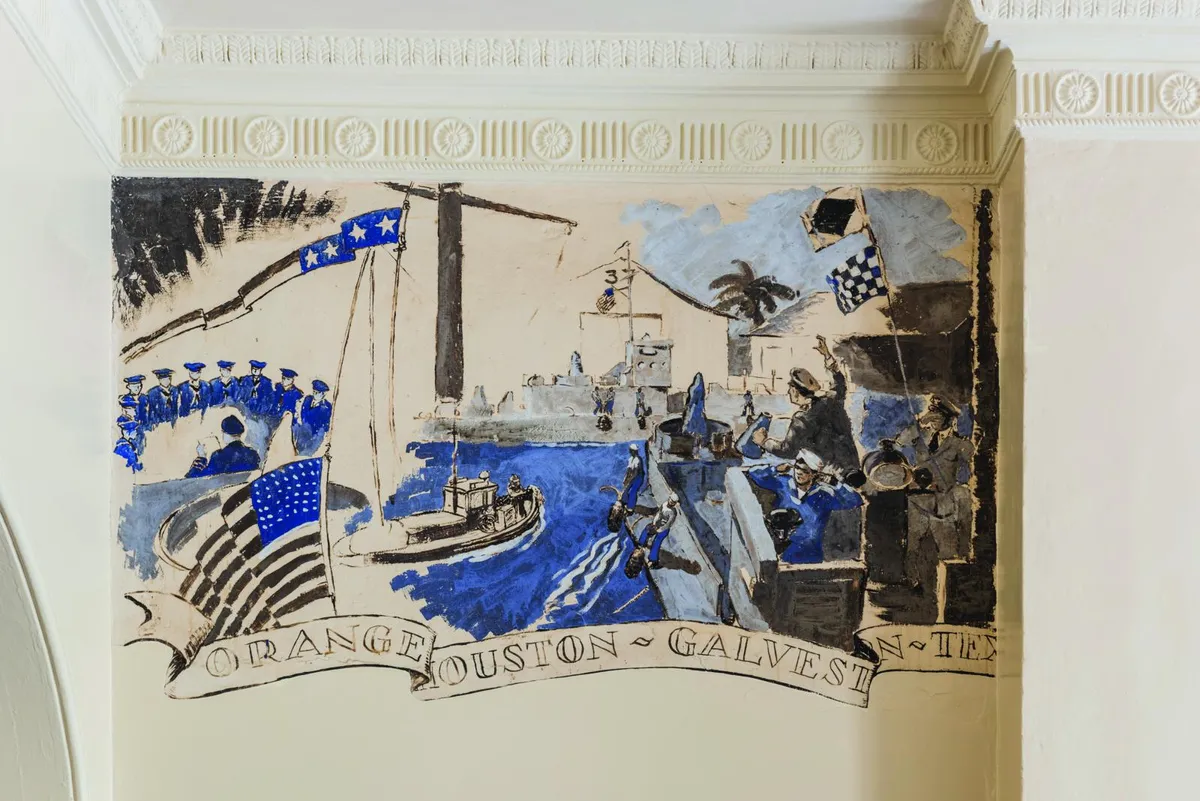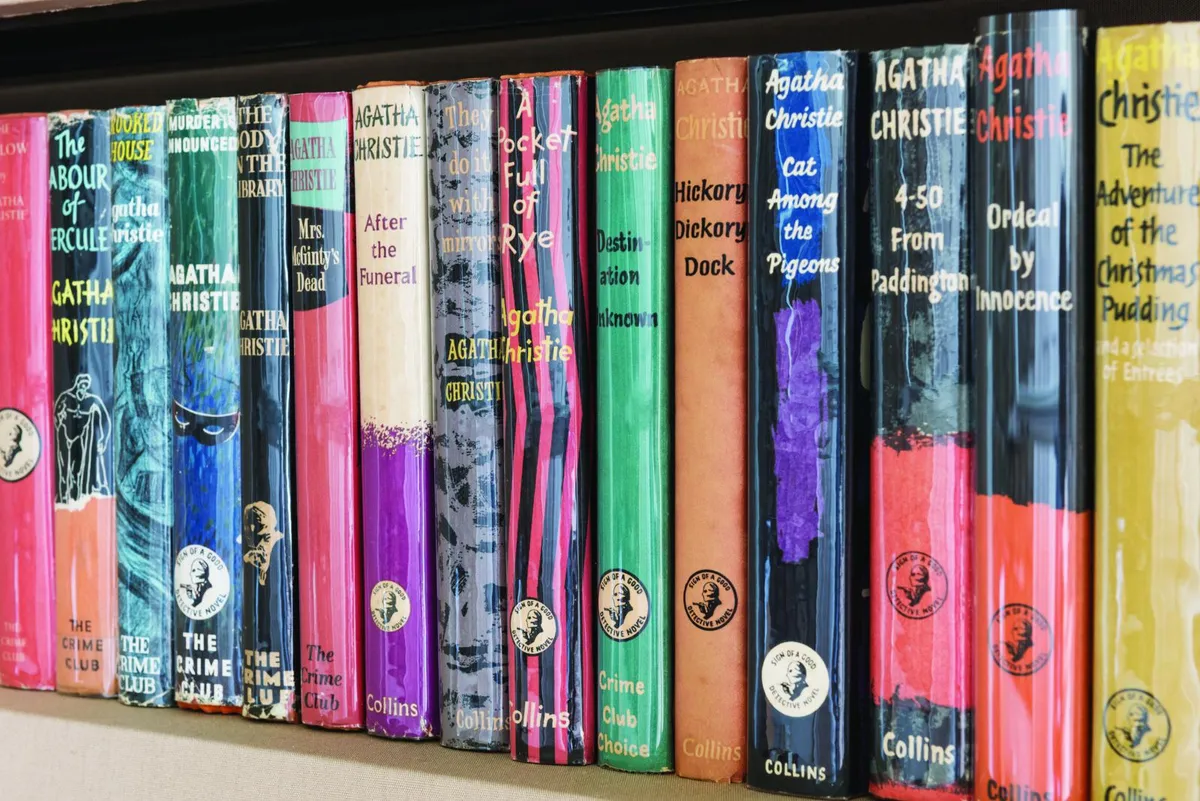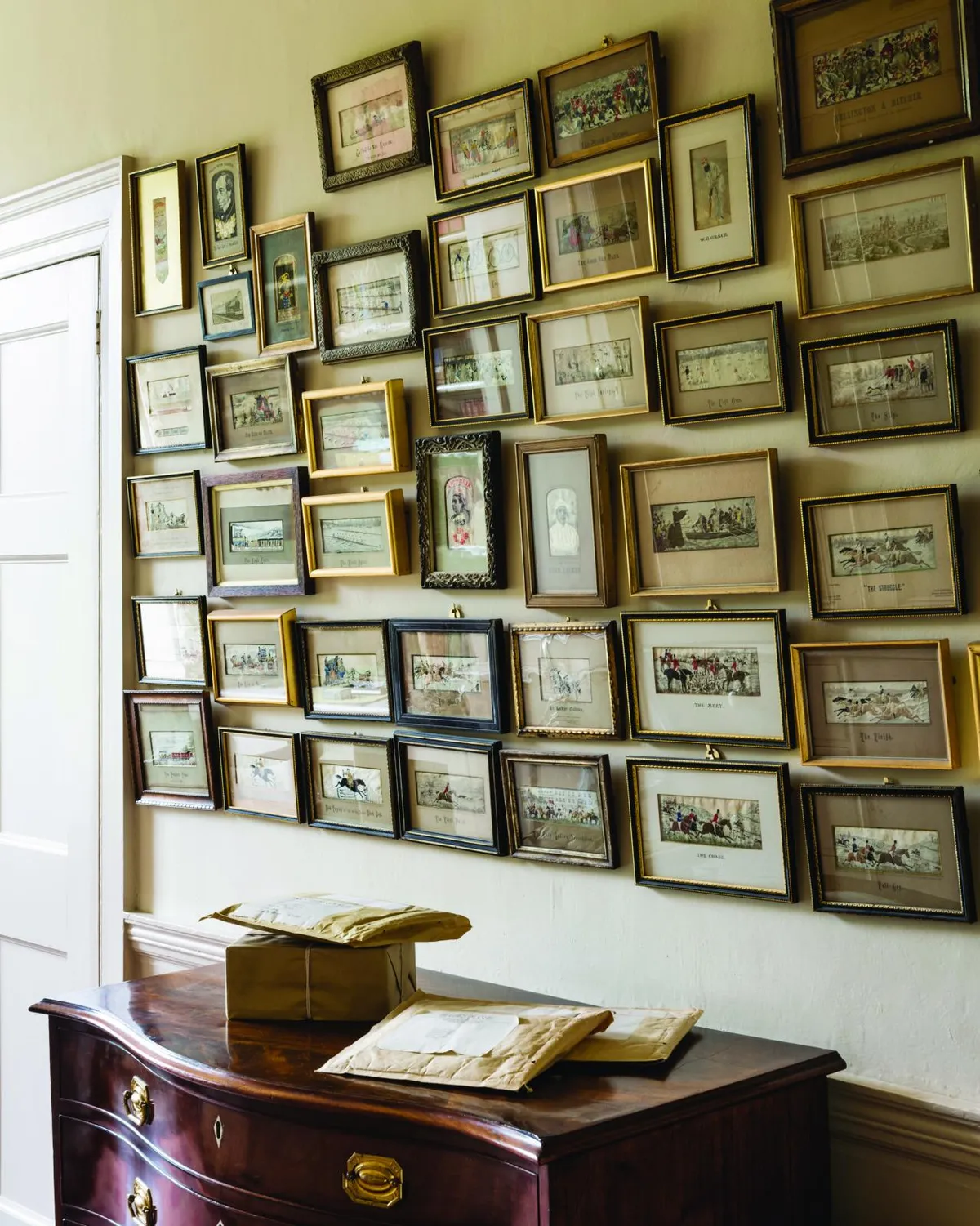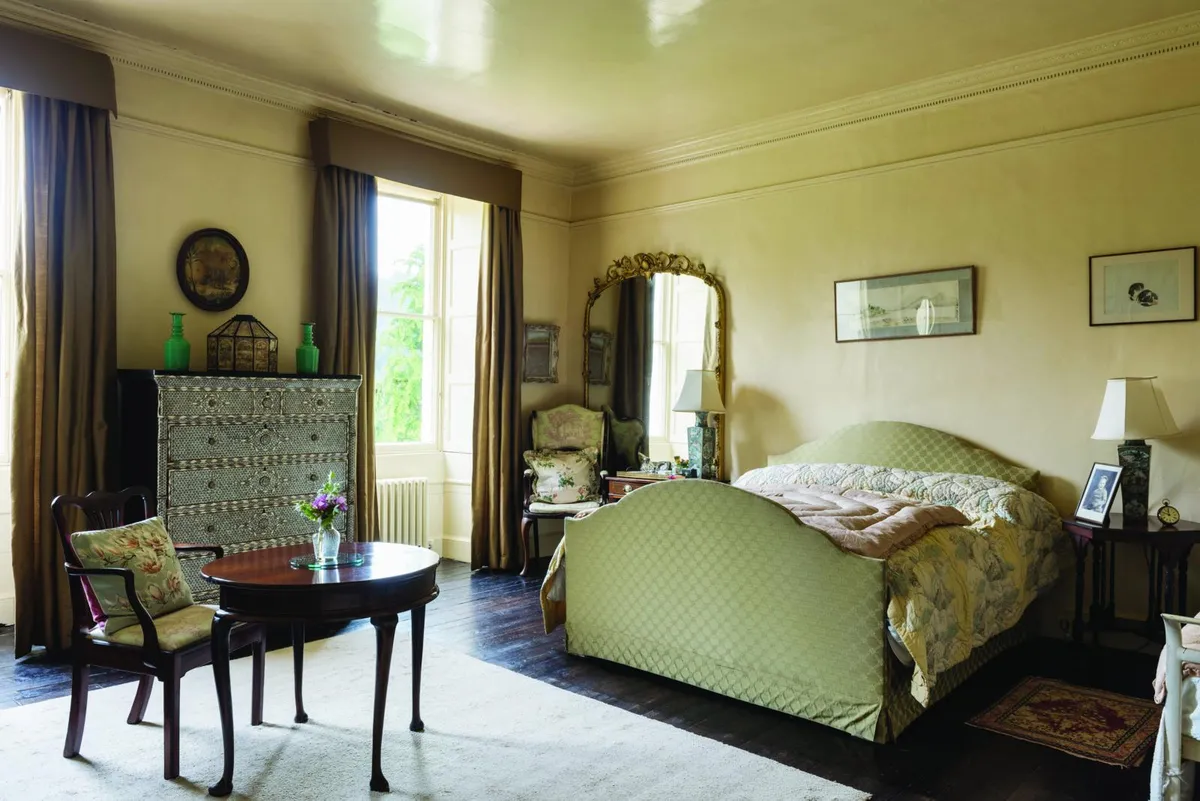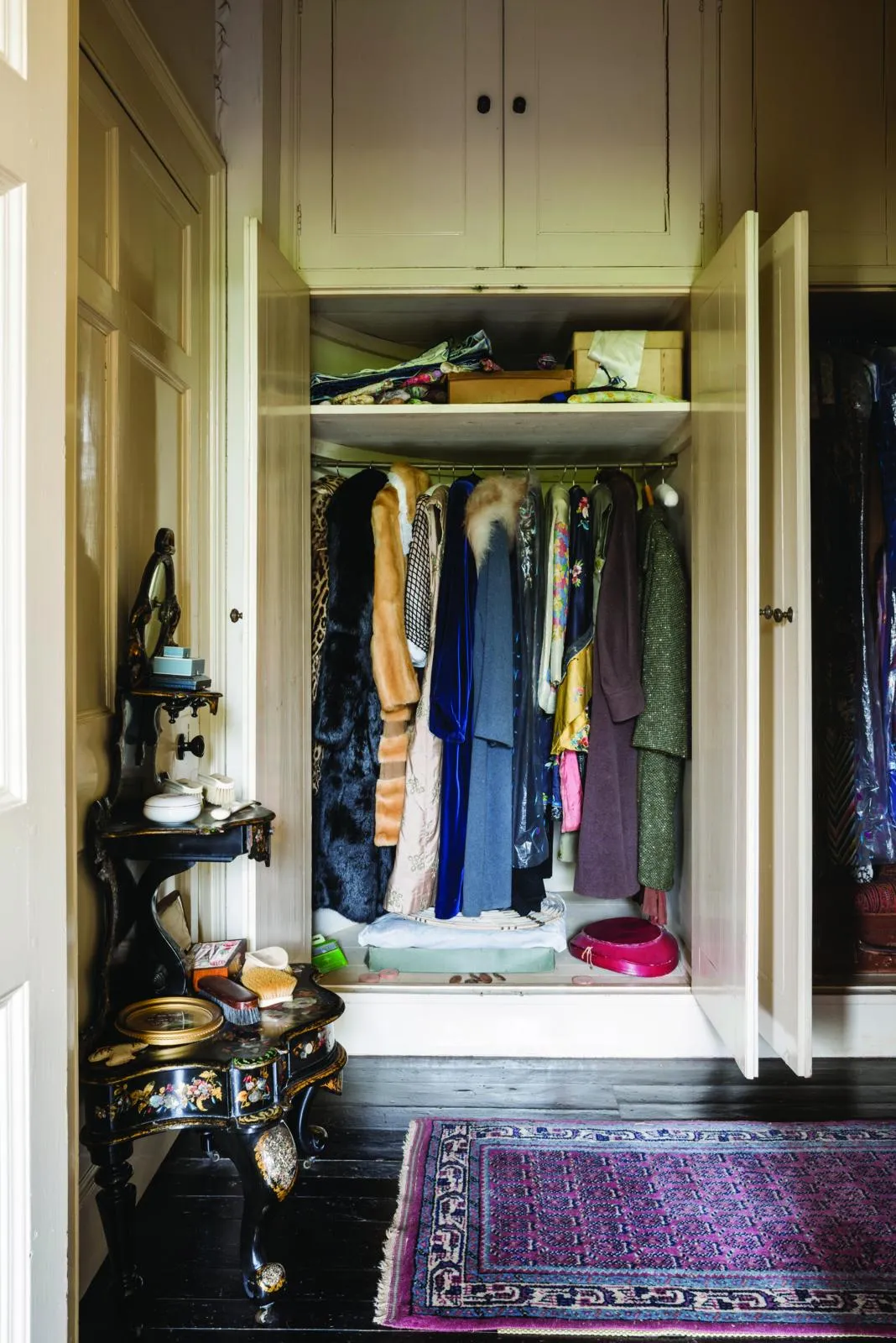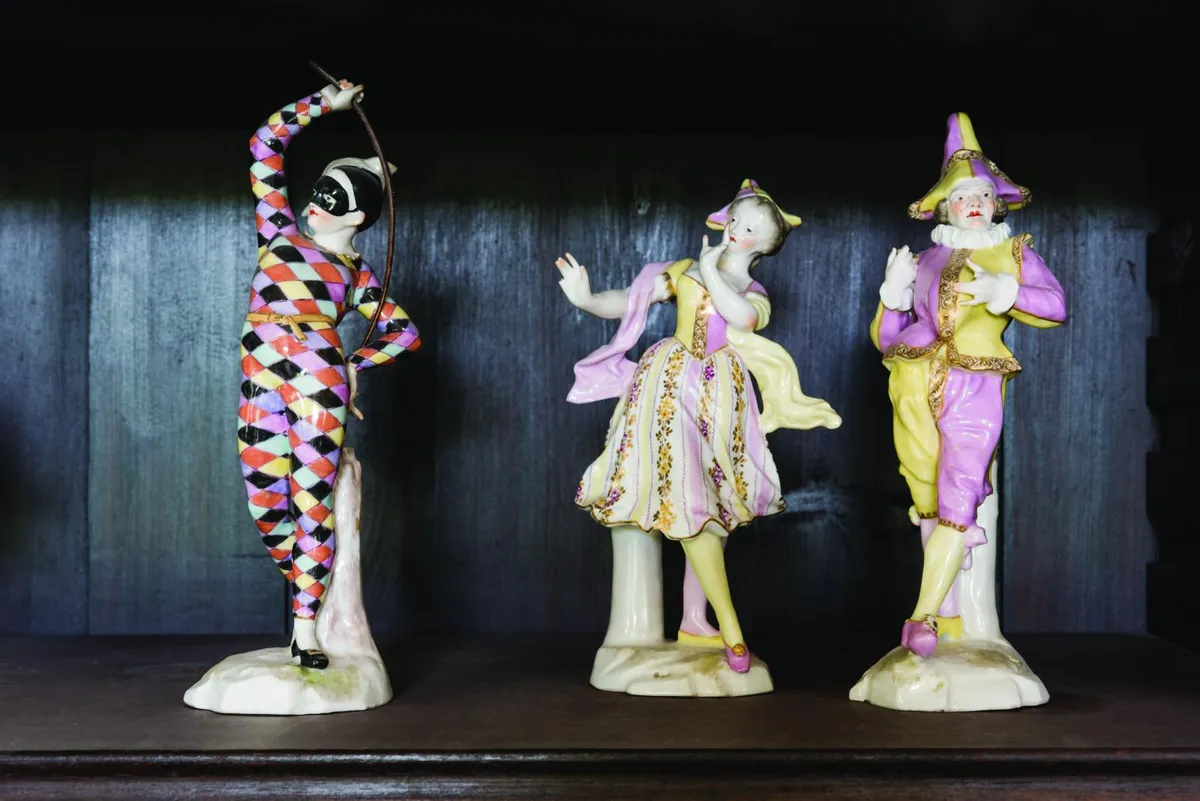Many homeowners might raise more than an eyebrow if an uninvited visitor painted a mural on their wall without first seeking permission, but not so Agatha Christie. During the Second World War, Greenway, her holiday home overlooking the River Dart near Galmpton, Devon, was occupied by 40 crew members of the US Coast Guard preparing for D-Day in 1944.
Officers used most of Greenway’s rooms as bedrooms, but the library became the officers’ mess, and it was here that one of the landing craft captains, Lt Marshall Lee, left an unusual record of his stay.
In his civilian life, Lee was a commercial artist, and he took it upon himself to adorn the walls with a frieze that depicts the Coast Guard flotilla’s travels over the preceding months. When the house was decommissioned and returned to Agatha on Christmas Day 1945, the US commander offered to have the mural painted out.
‘But Agatha saw it and said she wanted it kept, because it was part of the history of the house,’ recounts Laura Cooper, collections and house officer of Greenway. In time, younger family members also grew to appreciate Lee’s painting. ‘We know it was a favourite room of her grandson, Mathew Prichard, who recalled his grandmother sitting in there reading the paper every morning.’
Greenway’s story begins in the late Georgian period, when Harris Roope, an affluent 18th- century gentleman, replaced a Tudor mansion with the elegant, stuccoed building that we see today. Roope may have overspent on his building project because, soon after its completion, he went bankrupt, and the house was sold on to a Bristol merchant, Edward Elton.
Two wings flanking the central structure, housing the dining room and drawing room, were added by his family. Later in the 19th century, under different ownership, a billiard room and more bedrooms were added in another large extension. ‘When Agatha came here in 1938, one of the few changes she made was to have the Victorian part removed. She said it didn’t look right – and she didn’t want a billiard room or the extra bedrooms,’ explains Laura.
Agatha grew up in nearby Torquay and knew Greenway from her childhood. Having become disenchanted with her hometown’s development, she decided to look for somewhere quieter in the area.
In her autobiography she describes her rediscovery of the house: ‘One day we saw that a house was up for sale that I had known when I was young… we went over to Greenway and very beautiful the house and grounds were. A white Georgian house… with woods sweeping down to the Dart below… the ideal house, a dream house.’
By that point, she had been married to her second husband, the prominent archaeologist Max Mallowan, for almost a decade. The couple had met and fallen in love in Damascus. ‘Agatha went on an archaeological dig and Max was her guide,’ explains Laura.
It was also in Damascus that Agatha bought an eye-catching mother-of-pearl inlaid chest that she described as ‘the sort of furniture that reminds one of fairyland’. The chest has long had pride of place in the bedroom. ‘It’s one of my favourite pieces in the collection,’ says Laura.
‘It’s very heavy, and perhaps that’s why it has always stayed in the same place. It’s also probably why Agatha said it cost more to ship than to purchase. There’s a story that she kept waking in the night hearing odd tapping and ticking noises. Eventually, she realised it was woodworm in the chest.’
The guest book at Greenway shows the family spent summers, celebrated Christmases and held family parties here for more than 40 years. ‘Agatha didn’t write when she was at Greenway,’ Laura says. ‘It was somewhere to relax: her writing was done when she was abroad, in London, and sometimes in hotels.’
Even so, Greenway played an important role in her professional career, inspiring bestselling books such as Dead Man’s Folly, a Poirot story that was later filmed here. It was also at Greenway that stories were sometimes first aired. ‘When she’d finished a new book, if the family were staying, they would gather in the drawing room; she’d read the manuscript aloud to them and they’d try to guess what had happened,’ says Laura.
Aside from providing a place to relax, Greenway was a showcase for Agatha’s – and her family’s – passion for collecting. They bought on travels, from auction sales and local artists, and other items were inherited.
As you walk through the house, tabletops, shelves, display cases and cabinets are filled with a breathtaking array: European and oriental ceramics, studio pottery, Tunbridge Ware, papier-mâché and straw ware boxes, Stevengraphs (pictures woven from silk), paintings, silver, manuscripts, books, malachite writing implements and African tribal artefacts all jostle for space.
Laura has grown to expect public astonishment when visitors take it all in. ‘People often comment on the volume and range of collecting, and they can connect to things they see. But what I love is that it really gives you an insight into the extraordinary mind of Agatha.’
